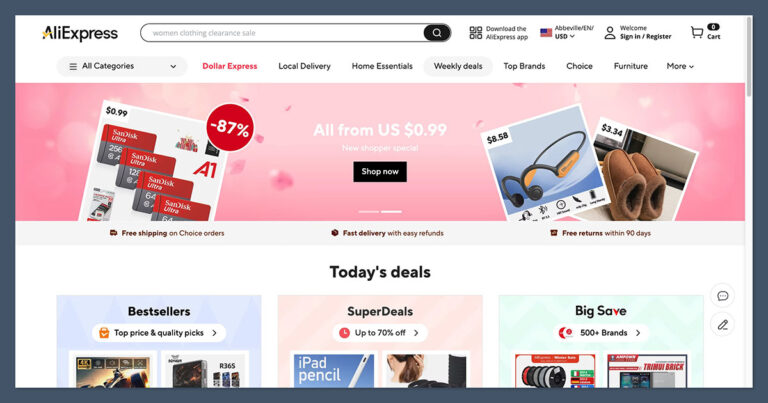Sometimes I give some freebie advice to my subscribers and readers by way of a blog post. I received an email from Becky at Classy Sassy Couture who is looking for more ways to market her website and improve her SEO. Classy Sassy Couture sells custom-beaded clothes and accessories via ClassySassyCouture.com. She also blogs at http://classysassycouture.typepad.com
Here’s a few of the questions/comments she had:
She tells me that she’s not sure what to blog about but that she picks up new followers whenever she blogs.
So first things first – that blog should really be on your own domain, e.g. classysassycouture.com/blog . It hurts me a little inside when I see people linking out to their blogs. While a popular blog hosted elsewhere can still help develop your brand name, it doesn’t help your site’s search engine rankings very much and it’s not very seamless for the user. One of the benefits of having a blog is that it can attract targeted traffic, and can boost your search engine rankings. But if all that lovely traffic is not going to your own domain, you’re missing out. So I would recommend getting WordPress set up on your site and creating your blog on that. You can export your content from Typepad and import it into a WordPress installation.
But, what to blog about?
Becky said she was running out of ideas. Currently she seems to use the blog to mention new products, talk about her travels and other personal topics. I think she has a great personal and conversational tone to her blog but would like to see her get more in-depth on topics related to her niche.
There’s several ways to go about getting inspiration for blog posts
1) Who is your target audience and what subjects are they interested in? Blog about those topics if they line up with your own interests and inspire you.
2) What blogs do you follow and enjoy? Look at why you follow them, what you like about them and how you can take inspiration from that. Are there topics they post about that you enjoy? Perhaps you can even join the virtual conversation by referencing a particular post and blogging your own thoughts on it.
3) Are there any ongoing, or hot topics of conversation within your business niche? Write posts that address those issues.
4) What is the inspiration behind your products? Give your audience some insight into what makes you tick, or your creative process. Maybe document the making of one of your products from inspiration through to completion, and include some great photos that help tell the story. This will help your readers feel even more connected to you.
5) Share insight about the back story of your business – why you started it, what you get from running it etc
6) What are your most popular posts currently? Look at your Analytics to see what’s already popular, or what readers have responded to the most (with comments, emails for example) and write more on those topics.
7) Look at the keywords that are bringing traffic to your blog – sometimes you see some phrases in there that you didn’t expect but give you some ideas as to what people are searching for that you could write about.
8) Go to the Google keywords tool and type in some relevant phrases to your industry – they will give you a list of related phrases and searches which can provide inspiration.
Google Adwords
Becky says she has been running a Google Adwords campaign: “My campaign is going okay, not sure that it has increased my sales/hits.”
If you don’t know, then chances are you are wasting your money! You should know exactly how much you’ve been spending and what sales and traffic have been generated as a result.
1) You can link your Adwords campaign to your Google Analytics account so that you can track in Analytics the traffic that is being generated by your campaign and if it’s effective for you. More info on how to do that.
2) Test different headlines and ad copy to see what performs best. Look at how much traffic is generated and how much actually converts to a sale.
3) Is your ad copy compelling? Fine-tune and revise what you’ve been using.
4) Create different ad copy for each of your products – don’t use a one-size fits all approach.
5) Are you sending people to the best possible landing page for that ad? For example, if your ad is about Aprons, when they click through it should go to the most relevant page on your site – not just the homepage.
SEO & Keywords
Becky mentioned that she’s trying to refine and optimize her keywords. She says “I’ve done research on keywords. I’m currently trying to target “rhinestone t-shirts, flip flops, aprons. faux pearl necklaces”…my main products.”
One of the main problems that many business owners seem to have with marketing is that they write it off too soon, without giving it a proper chance to work. See my post Recharge & Refine Your Marketing Strategy.
I see this a little with Becky’s site. She gives specific keywords she is trying to rank for, but her site reflects a lack of focus for those keywords.
1) Let’s use ‘rhinestone flip flops’ as an example. The product page for flip flops does have a title that includes ‘rhinestone beaded flip flops’ but that phrase is not repeated anywhere else in the actual page.
2) The product pages urls are not SEO-friendly. Url re-writing to create urls with keywords in them (rather than id numbers) would be preferable. Since Becky is using a 3rd party shopping cart provider, this may or may not be a feature they provide. Ask the shopping cart provider if that is a feature they have or can add.
3) There is very little text on the product category pages – consider adding a paragraph of descriptive text incorporating your keywords.
4) The individual product pages do fare a little better, but the optimization could be tightened up by targeting more specific keywords on each product page. Each page should be focused toward a specific keyword or phrase. Those words should be used in the title, the product description, the alt text of the image and the name of the product.
5) None of the flip flop products are actually named using the word ‘rhinestone’. So perhaps pick one or two products that make sense and add the word ‘rhinestone’ into the product title under the image (this will also include the word ‘rhinestone’ in the link anchor text, creating solid internal links). On the following product page, make sure ‘rhinestone flip flops’ is in the title AND in the description and alt text for the image. Repeat this process for each product and make sure the names and other elements are all focused on specific keywords.
Keyword research
1) Do thorough research and come up with any variations on your keywords that you can incorporate and make sure each product page is optimized for specific phrases as above.
2) Go for the low-hanging fruit. For example the phrase ‘western rhinestone flip flops’ gets a few hundred searches per month, but only has about 66 000 competing pages, compared with 225 000 pages for ‘rhinestone flip flops’ – the latter isn’t a huge amount of competition, but since you are having problems ranking for the more competitive phrase, start with the smaller fish. Repeat this process for your other phrases and products. Rank for the less competitive phrases first, then start to target the more difficult ones.
Are you building backlinks?
Links to your site from other relevant sites are an important part of SEO and marketing your site.
1) Look for relevant websites in your niche that may be willing to link to you such as directory sites (manually compiled lists of websites organized by topic), other blogs etc.
2) Build links to your specific product pages using your keywords in the anchor text. Eg. rather than generic text like ‘click here’, a better link would be: ‘purchase rhinestone flip flops at classy sassy couture’ – linked to your rhinestone flip flops product page.
3) Write posts on your blog about your specific products, making sure to include the relevant keywords in the title and body of the post, alt text of the image, and in the link you provide back to the product page.
4) Do some competitive research to see how you can improve. Who are your competitors? Look at their sites and see what they are doing differently or better than you.
5) Go to Yahoo Site Explorer and see where your competitors are getting backlinks from – perhaps there are some sites you can also target for backlinks?
These are just a few starting points for Becky to work on to improve the effectiveness of her web marketing, that you can adapt for your own site as well.
If you think your site or business could benefit from a customized online marketing strategy, drop me a line.
*header image courtesy: Kristian M


